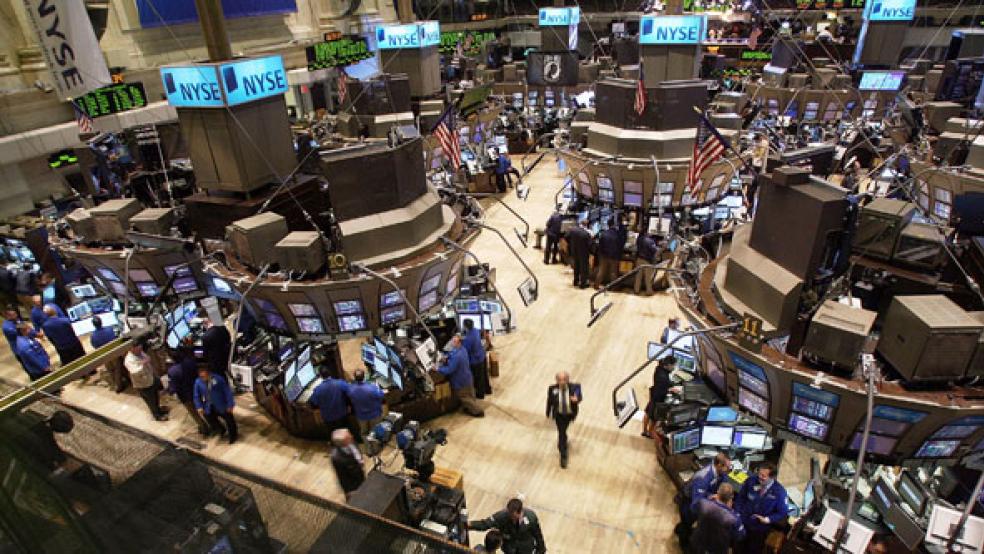Just as one swallow doesn’t make a spring, a handful of successful initial public offerings don’t signal that the long winter chill in the market for venture capital-backed IPOs is at an end.
In fact, you may want to rein in your exuberance.
True, this was a great week for those praying and hoping that the window for IPOs will blow wide open again now that spring has arrived. On Wednesday, no fewer than three companies priced their initial share offerings, and all three saw respectable to excellent “pops” in their first day of trading on Thursday.
Virtu Financial (VIRT), a high-frequency trading firm (yup, one of the gang of Flash Boys that author Michael Lewis claims is rigging financial markets) priced at $19, at the high end of its range, and opened for trading at $23. It ended its first day of trading with a 20 percent gain, even after Lewis’s book and the ensuing kerfuffle about high-frequency trading put demand for the stock into the deep freeze.
The other two IPOs played to the retail crowd — literally, as both companies are more or less household names. Party City (PRTY), an established bricks-and-mortar and online retailer of (you guessed it) party goods, priced at $17 a share, opened at $20.50 and wrapped up its first day of trading at $20.70, another fairly impressive pop.
The final member of the trio is Etsy (ETSY), the online marketplace for all kinds of crafty folks. This IPO is the most intriguing of all, since it’s a B corporation — committed to social responsibility — and it isn’t yet profitable. Investors flocked to the stock with enthusiasm: Priced at $16 a share, Etsy’s stock exploded, ending its first day of trading at $30, an 86 percent pop.
Related: The Hidden Problems Lurking in Etsy’s ‘Feel Good’ IPO
It’s all a big change from the first quarter of the year, when venture-backed IPOs languished. A mere 17 companies that had been financed by venture capital companies managed to make their way to market in the first three months of 2015, raising only $1.4 billion. It was the first time in two years that there had been fewer than 20 IPOs in any quarter, while the average size of those IPOs — $84.3 million — was the smallest on record in four years. In contrast, Thursday’s three IPOs all raised between $200 million and $400 million.
That doesn’t mean that investment bankers were sitting and twiddling their fingers idly during the winter. Instead, they were working on different kinds of deals: secondary issues by already-public companies, which dwarfed the number of IPOs.
Public companies raced to take advantage of the fact that prices and valuations were near record highs (as reflected by the market’s indices). Even when a company’s stock was in the doldrums, this didn’t stop them: Noble Energy (NBL), trading well below year-ago prices, raised $1 billion via a secondary offering and used it to pay down debt. Overall, according to Dealogic, the frenetic pace of these follow-on offerings generated $75.1 billion in proceeds over the three months through March, making it the best first quarter on record and the fifth best quarter ever.
Bankers now are going to seize on the three just-completed IPOs as evidence that that investors are eager to snap up more new candidates, and open up the pipeline. But the market’s fundamentals are different from those that made 2014 so favorable for IPOs. That should make even the most excitable IPO fan pause for a sober second thought.
Last year kicked off with stock market valuations that were only just starting to creep into the higher end of the spectrum; the M&A market was robust; the stock market was coming off a strong year.
This year, however, we face far more headwinds. At some point, the Federal Reserve will begin raising interest rates; trepidation is growing about flagging earnings or that some external shock will threaten high valuations; some of the potentially most appealing companies (Uber, anyone?) have found they can exist quite comfortably without having to tap the public markets for capital, leaving the more needy businesses to file for IPOs.
Investors, meanwhile, need to remember the realities of life at the top of a market cycle. As valuations linger in lofty territory, nervousness becomes more acute. And when the anxiety spills over into selling, some of the first to feel the pressure may be the newer and more untested companies on the market — those that are seen as possessing more risk, that may not yet have profits, whose valuations may have soared as a result of exuberance.
Related: Forget the Fundamentals, This Market Is About Just One Thing
Since many IPOs also tend to have a smaller percentage of their shares trading freely (in other words, a smaller “float”), they also may offer investors less liquidity, meaning that in times of volatility they can be harder to sell without taking a loss.
The good news? If bankers take a calm and disciplined approach to the reopening of the IPO window, they’ll carefully curate candidates and present only the best of the bunch for investors’ consideration. That’s the best-case scenario. The problem is that we’re heading into the seventh year of a bull market. Show me an IPO banker that is patient and disciplined in that context, and I’ll show you a unicorn.
Top Reads from The Fiscal Times:






